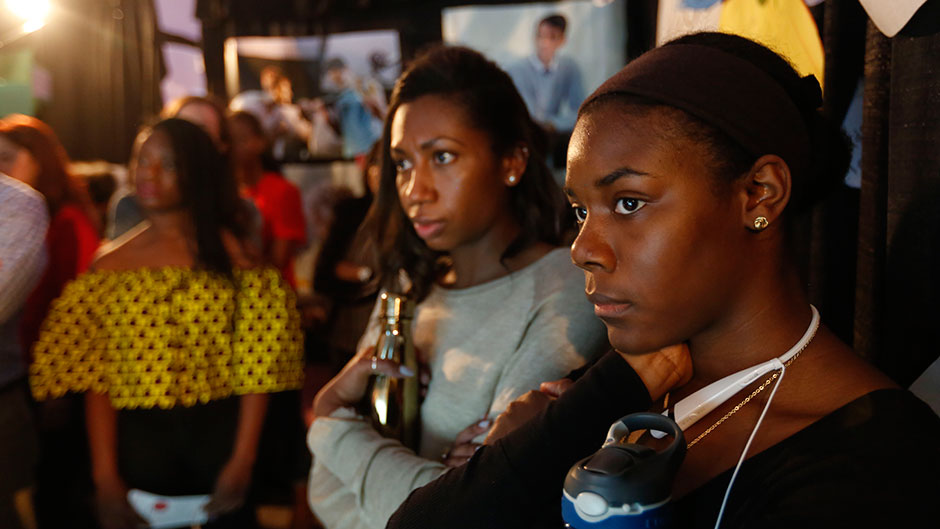Each room in the exhibit is dark, with walls illuminated only by a bright, orange beam of light. On the makeshift curtain walls of each room are images: news headlines, photos, tweets, articles, maps and Facebook posts, all designed to create awareness and engage participants in a dialogue.
As one programming event offered during the campus-wide Social Justice Week, Tunnel of Oppression is a sensory-based museum style exhibit designed to expose participants to various social injustices including environmental degradation, poverty, human trafficking, women’s and LGBTQ issues, racism, religion and mental health. The exhibit is a multi-sensory experience, meaning Tunnel-goers interact with the exhibit through sight, hearing and touch.
“Tunnel is supposed to be a catalyst,” said Nigel Richardson, a senior majoring in Africana Studies and film. “It opened my eyes to LQBTQ, religious and women’s issues; things that I haven’t really considered and are outside my lived experience.”
This year’s Tunnel, sponsored by the University of Miami’s Butler Center for Service and Leadership, juxtaposes the creature comforts of the university campus with the stark, often harsh injustices and various forms of oppression that occur around the world, hoping to increase student awareness and tolerance on campus.
Visitors to the Tunnel move from one exhibit to the next, each one a display of injustice. In a room focused on environmental degradation, a quote from President Bill Clinton exposes his regret for unintentionally destroying the Haitian rice farming industry, and the ability of Haitians to feed themselves, through eased trade policies.
Poverty shared the parallel lives of two children, one who grows up in poverty while the other grows up in wealth, and the effect poverty has on a child’s education. The exhibit then transitions to human trafficking, where two students stand for sale on a podium. The striking image – both students standing in solidarity, as if waiting to be sold – brings to life the indignity that is inherently tied to human exploitation.
Tunnel-goers experience women’s injustices through headphones that play popular hip hop and pop songs from artists including Rick Ross and Future that perpetuate rape culture in American society. Song excerpts were followed by sexist remarks by President Donald Trump, showing that sexism exists at every level of society. As participants continue to travel through the Tunnel, they experience the discrimination members of the LGBTQ community face, the racial injustices encountered by all races—not just the traditionally marginalized black and Hispanic communities, and the misconceptions around Islam.
In its ninth year, the Tunnel of Oppression exposes visitors to different worldviews, perspectives, and experiences in a way that preaches tolerance and acceptance as a solution to the social issues facing the United States and abroad.

